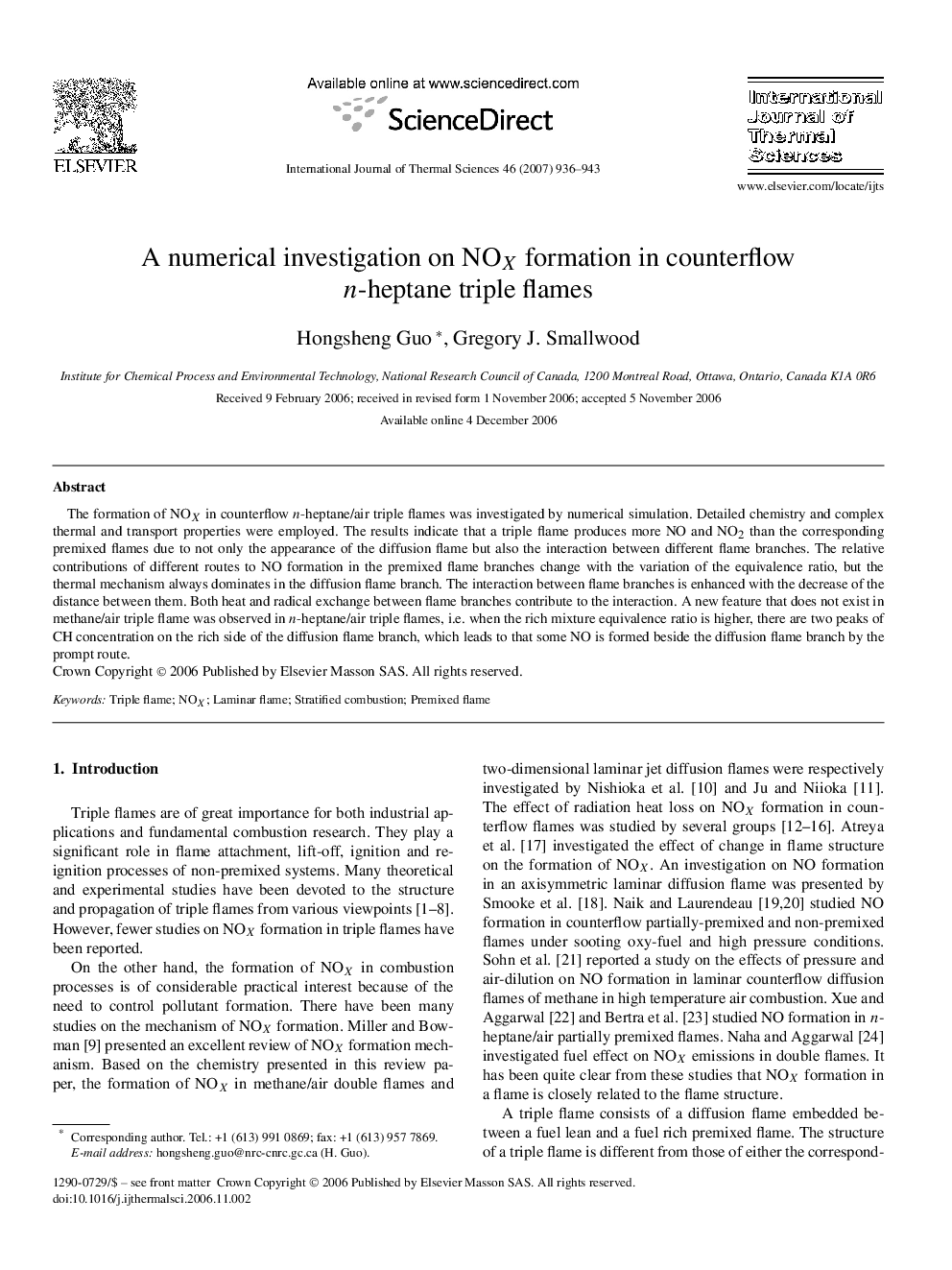| Article ID | Journal | Published Year | Pages | File Type |
|---|---|---|---|---|
| 669620 | International Journal of Thermal Sciences | 2007 | 8 Pages |
Abstract
The formation of NOX in counterflow n-heptane/air triple flames was investigated by numerical simulation. Detailed chemistry and complex thermal and transport properties were employed. The results indicate that a triple flame produces more NO and NO2 than the corresponding premixed flames due to not only the appearance of the diffusion flame but also the interaction between different flame branches. The relative contributions of different routes to NO formation in the premixed flame branches change with the variation of the equivalence ratio, but the thermal mechanism always dominates in the diffusion flame branch. The interaction between flame branches is enhanced with the decrease of the distance between them. Both heat and radical exchange between flame branches contribute to the interaction. A new feature that does not exist in methane/air triple flame was observed in n-heptane/air triple flames, i.e. when the rich mixture equivalence ratio is higher, there are two peaks of CH concentration on the rich side of the diffusion flame branch, which leads to that some NO is formed beside the diffusion flame branch by the prompt route.
Related Topics
Physical Sciences and Engineering
Chemical Engineering
Fluid Flow and Transfer Processes
Authors
Hongsheng Guo, Gregory J. Smallwood,
